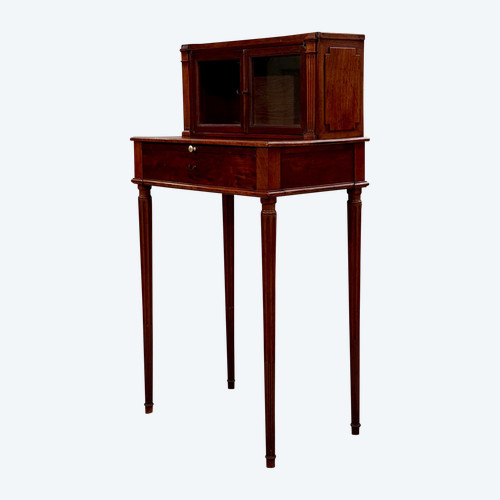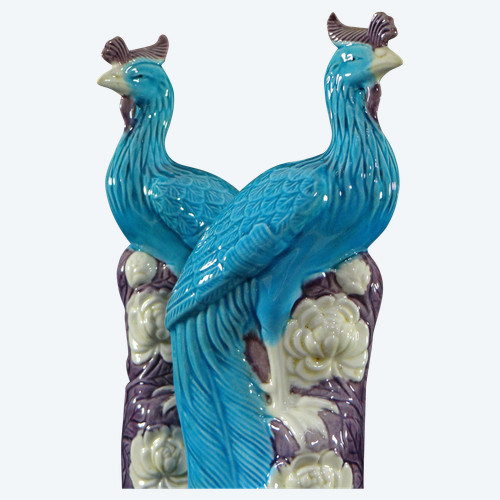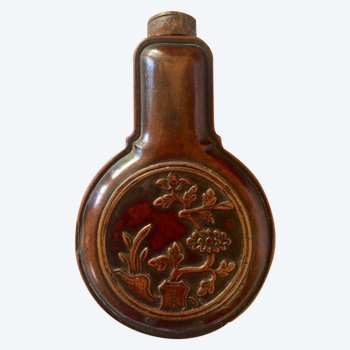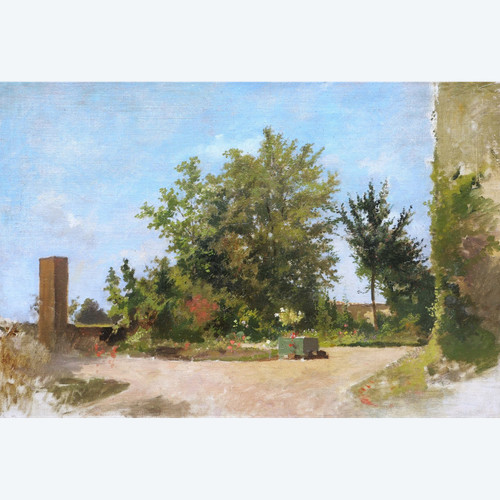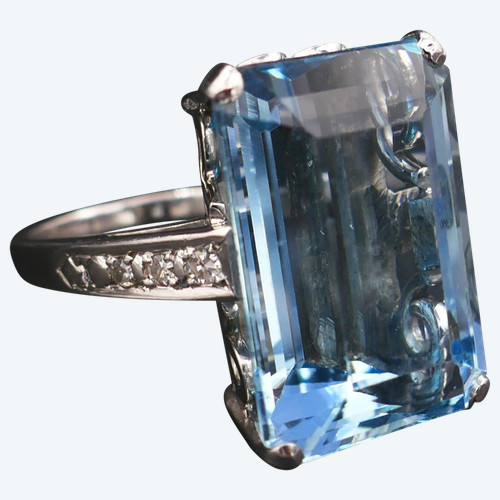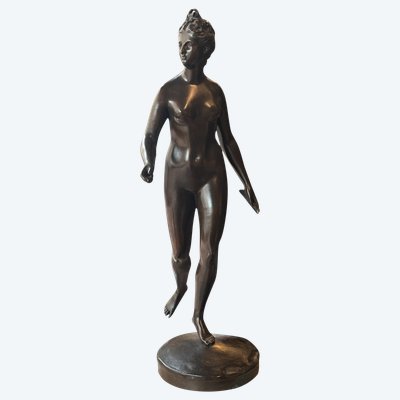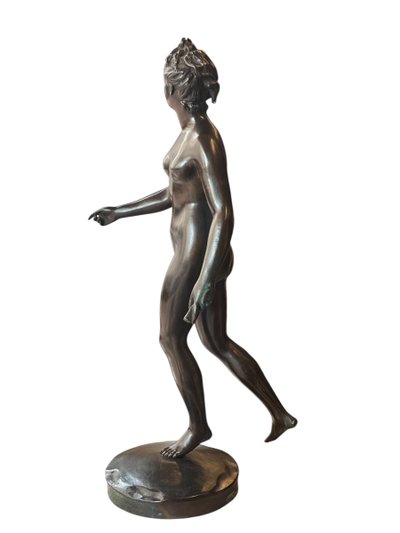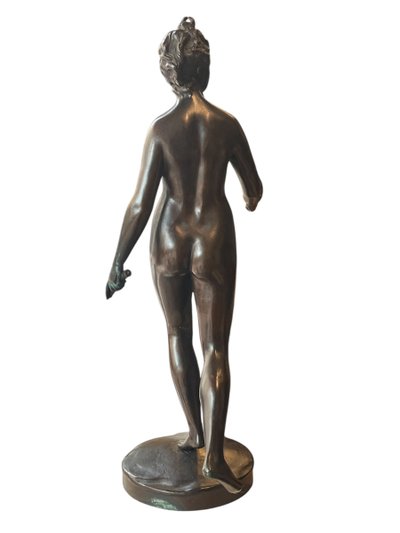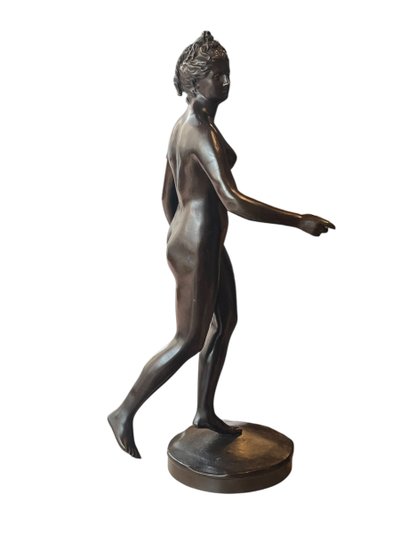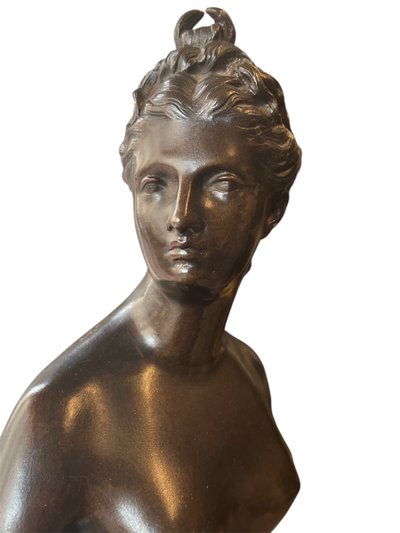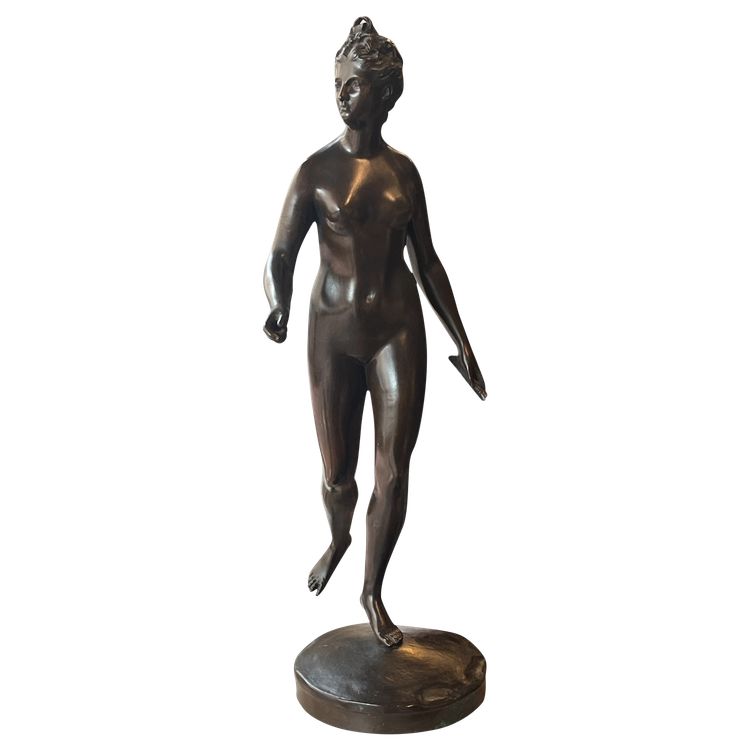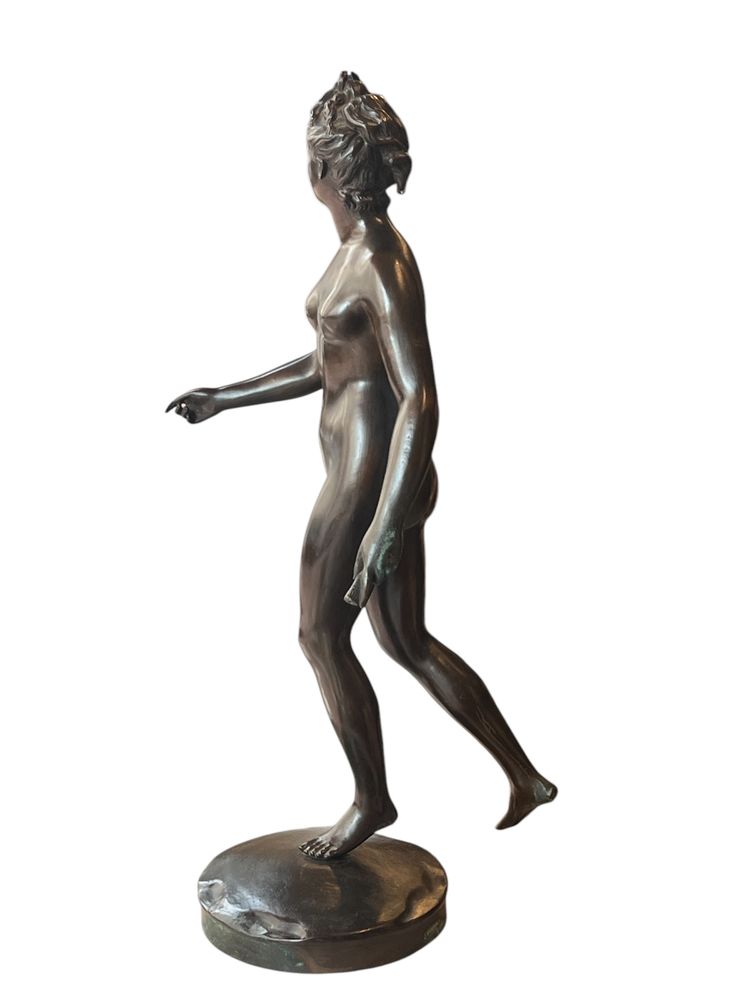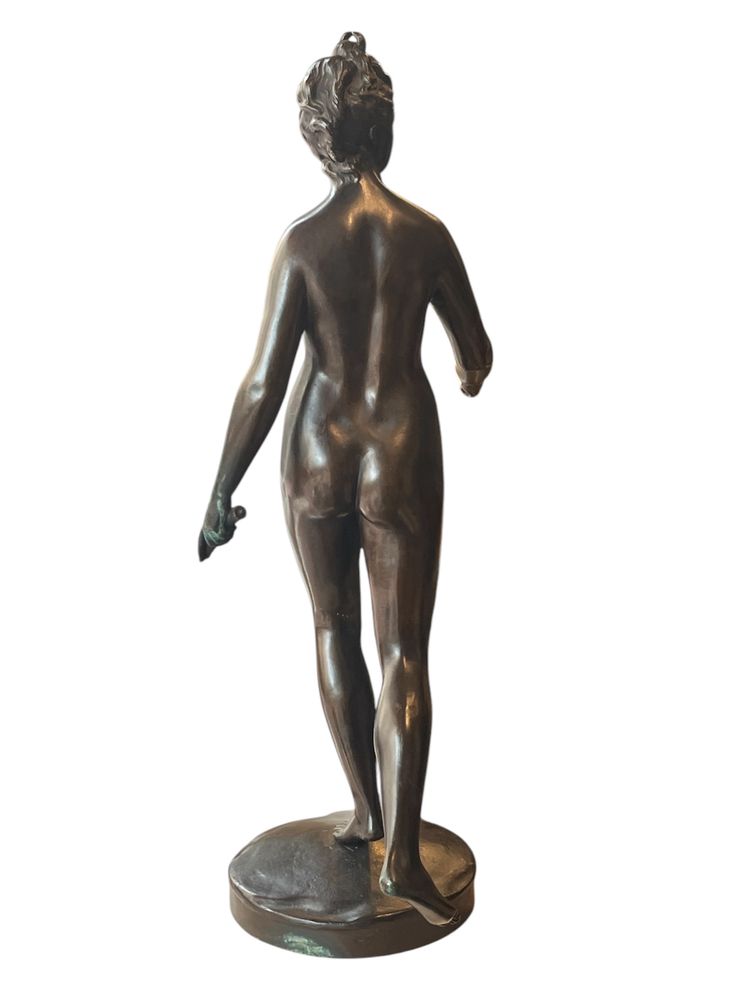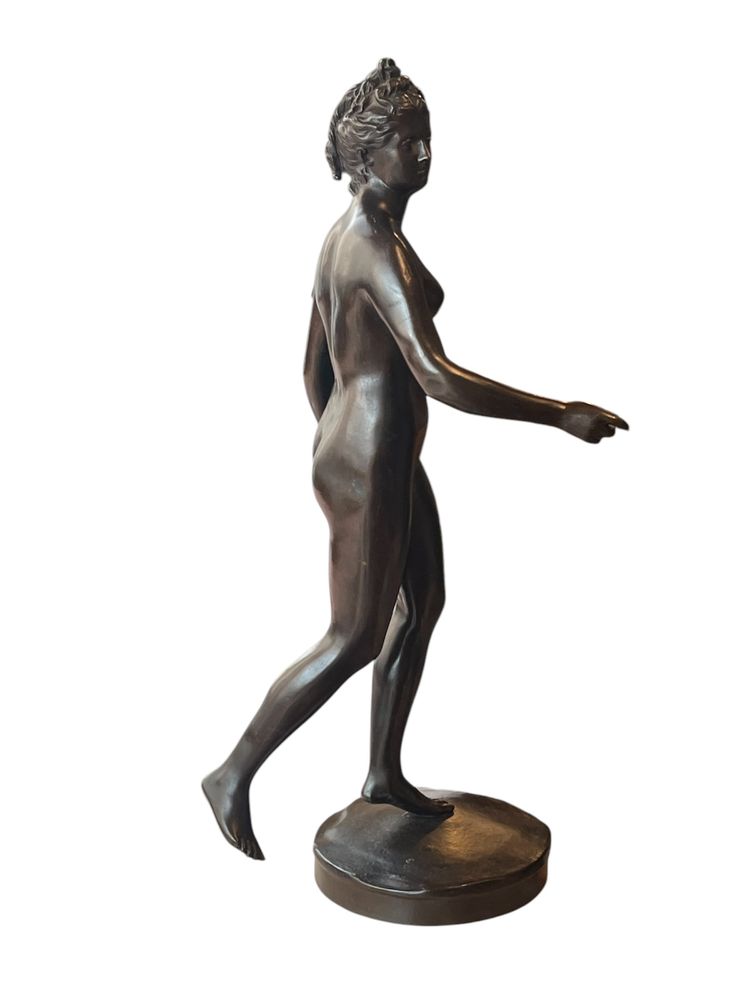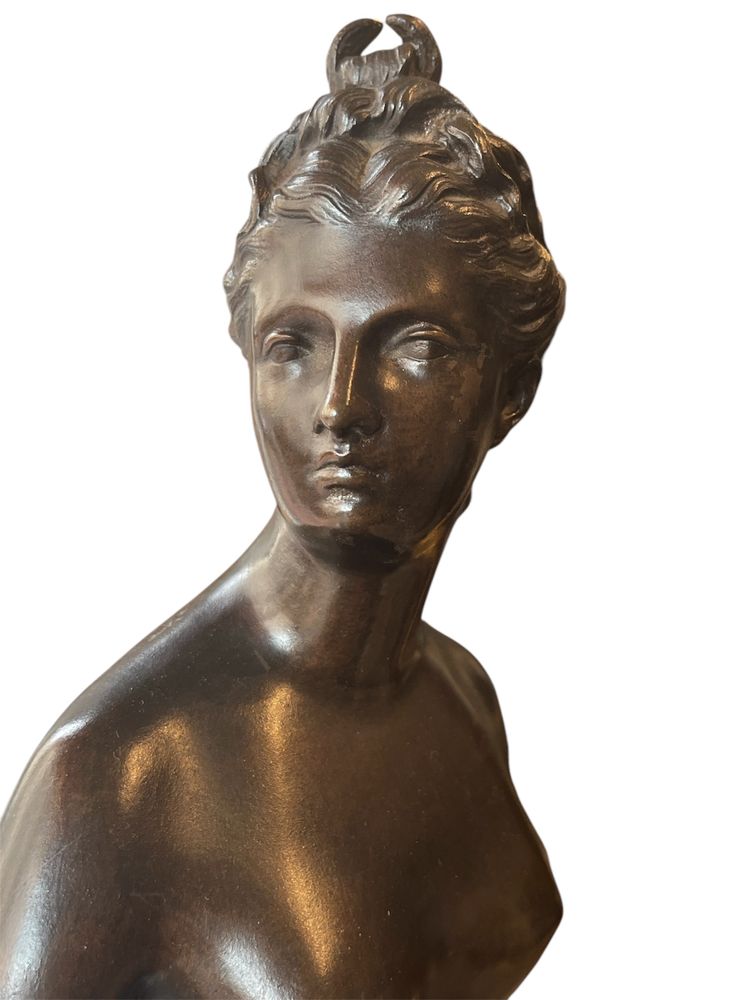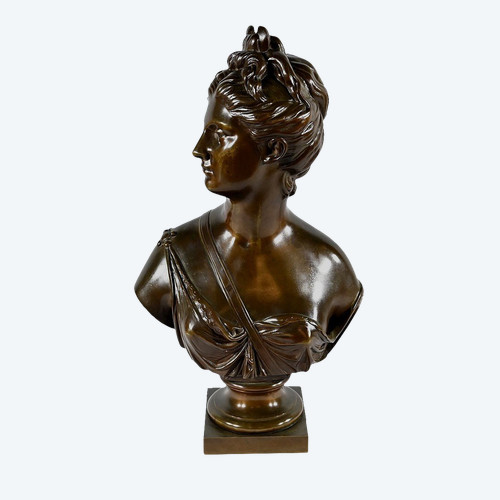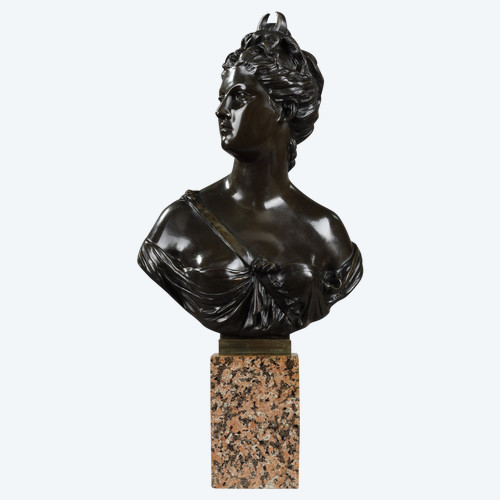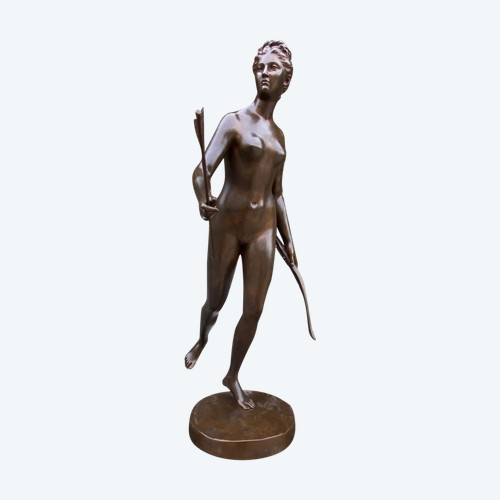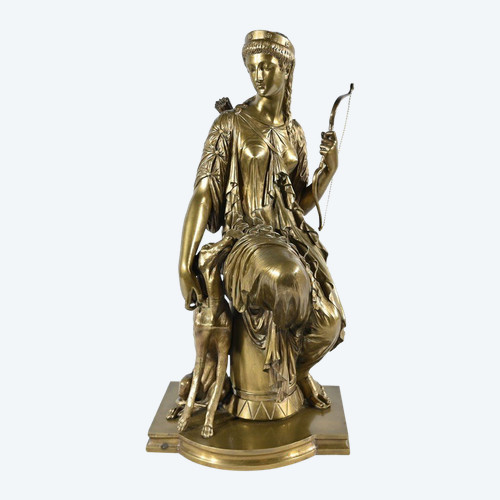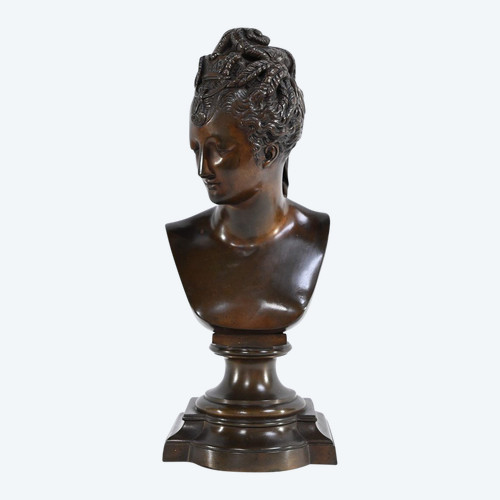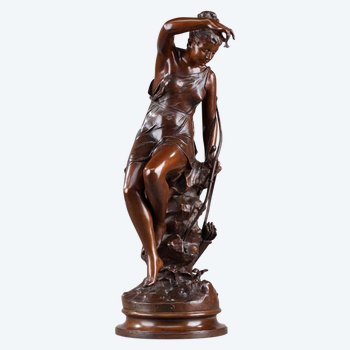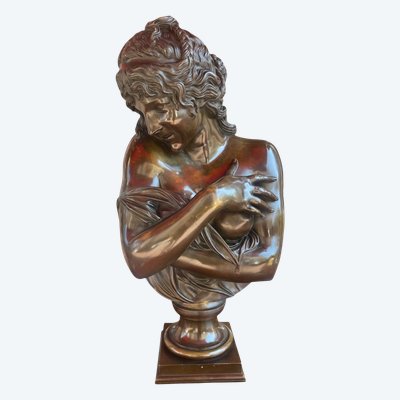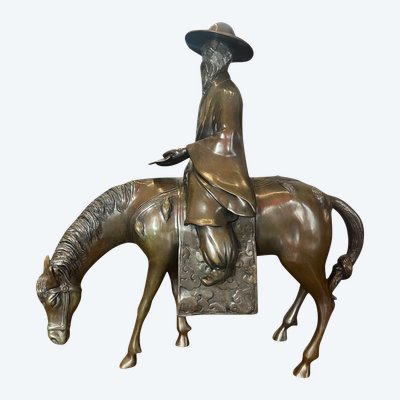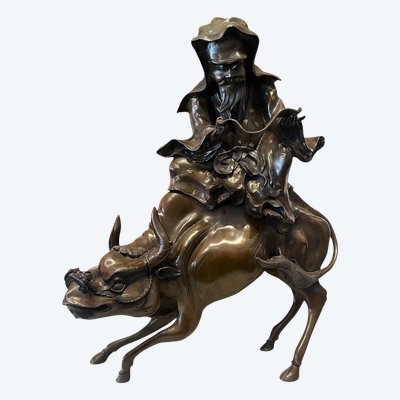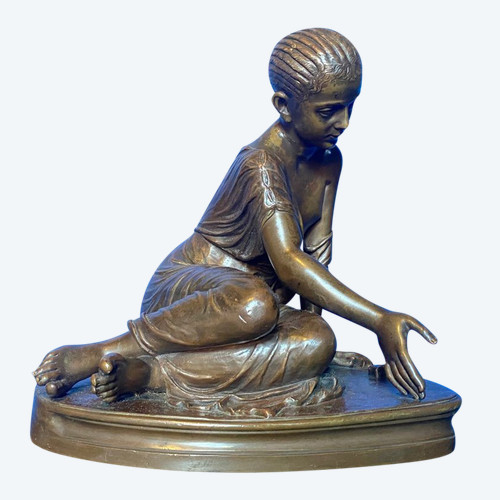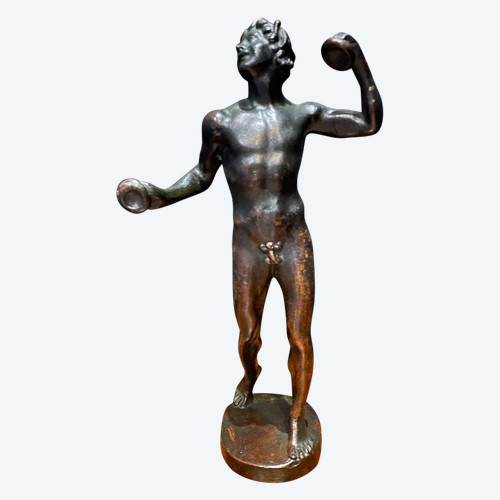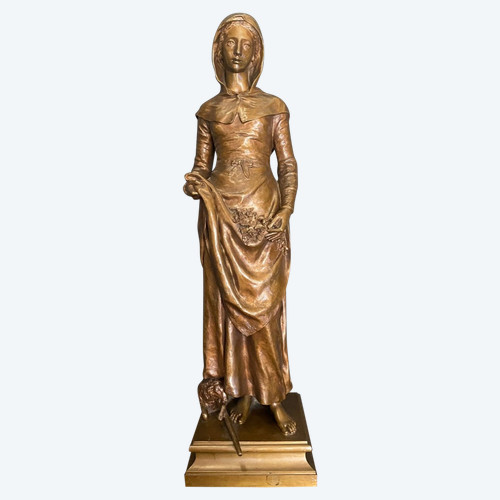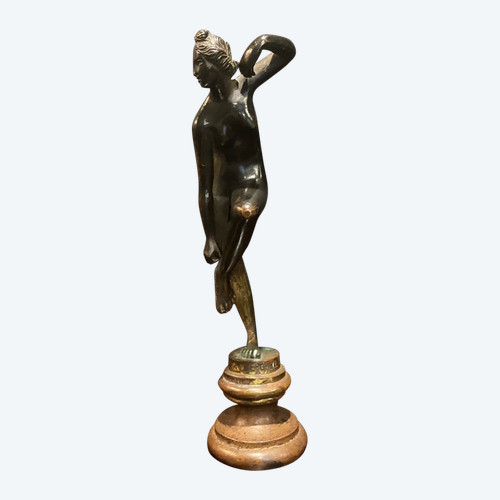This description has been translated and may not be completely accurate. Click here to see the original
Brown patina bronze sculpture of the goddess "Diana the Huntress", after Jean-Antoine Houdon.
In Roman mythology, Diana is the goddess of procreation, hunting, wilderness and the night.
Daughter of "Zeus" and "Leto", twin sister of "Apollo", she is associated with the Moon, as opposed to her brother who is associated with the Sun.
She is likened to the goddess Artemis in Greek mythology.
Houdon justified his choice, which did not conform to the mores of the time, by saying that for him, the nudity of the gods, who have perfect bodies, was not immodest, unlike that of men.
Antique edition sculpture, after Houdon.
Second half of the 19th century, circa 1870.
France XIX ème
Jean - Antoine Houdon (1741-1828)
Jean - Antoine Houdon , born March 20, 1741 in Versailles , famous French sculptor , he is one of the most important statuaries of the XVIIIth century , renowned for the realistic rendering of his works .
His father's position as concierge at the École Royale des élèves protégés undoubtedly facilitated his early career.
A pupil at the Académie Royale before the age of fifteen, a boarder at the École des élèves protégés (1761-1764), then at the Académie de France in Rome (1764-1768), admitted to the Académie Royale in 1769, he was made a member in 1777, on presentation of his Morphée (Louvre).
In 1793, he was among the first to renounce his title and academic privileges, but was elected a member of the new Institut in 1795, and successfully applied for the Légion d'honneur in 1803.
Neither his two trips to Germany (1771 and 1773), nor his trip to the United States (1785), nor his marriage (1786), nor even the turmoil of the revolution disrupted his creative activity, the most visible manifestation of which was the regularity with which he exhibited at the Salons: from 1769 to 1795, he presented a fairly large number of sculptures every two years.
Highly skilled in marble, Houdon also had a great talent for shaping clay and plaster.
His work is characterized by realism and precision in the representation of bodies, particularly busts, in which he excelled and which he knew how to bring to life.
According to Grimm, "Houdon was perhaps the first sculptor who knew how to model eyes".
Ref: AHC64B57EQ

